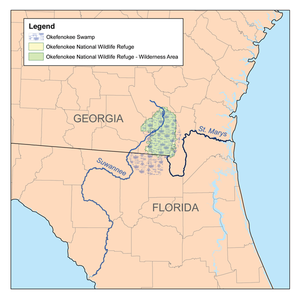For those who are old enough, it’s hard to forget the big changes in environmental protection that occurred during the 1970’s — the Endangered Species Act, Clean Water Act and Clean Air Act. With all of this happening almost overnight, few would have recognized the transformation that took  Presient Nixon signing Clean Water Actplace in the conservation of wildlife. The 1970’s were also the culmination of decades of slow progress that eventually led to huge advances in the protection of animal and plant species. The 70’s marked the triumph of science eventually taking hold in the agencies that were conducting wildlife management. The question now is, “has the management of wildlife improved since then?”. There has certainly been many successes, more conservation groups, more agency staff, but as a biologist whose career began in the 70’s, I have to say progress has been elusive. I say this not because of the money, there is certainly more spent now for the dedication of the professionals, the youth today are as passionate as before, but from my perspective it seems conservation organizations themselves are far less able to deal with today’s problems.
Presient Nixon signing Clean Water Actplace in the conservation of wildlife. The 1970’s were also the culmination of decades of slow progress that eventually led to huge advances in the protection of animal and plant species. The 70’s marked the triumph of science eventually taking hold in the agencies that were conducting wildlife management. The question now is, “has the management of wildlife improved since then?”. There has certainly been many successes, more conservation groups, more agency staff, but as a biologist whose career began in the 70’s, I have to say progress has been elusive. I say this not because of the money, there is certainly more spent now for the dedication of the professionals, the youth today are as passionate as before, but from my perspective it seems conservation organizations themselves are far less able to deal with today’s problems.

 I began my career in the 70’s after completing a master’s in wildlife management, at first in South Carolina but ultimately as a regional game biologist in Georgia. My region covered an area about ½ the size of New Jersey and included portions of the Okefenokee Swamp, a home — then as now — to black bears, alligators, cottonmouths, three species of rattlesnake and the notorious coral snake. This very rural area in the deep south, where there were more deer than people, was just then emerging into the modern era of civil rights for both white and black.
I began my career in the 70’s after completing a master’s in wildlife management, at first in South Carolina but ultimately as a regional game biologist in Georgia. My region covered an area about ½ the size of New Jersey and included portions of the Okefenokee Swamp, a home — then as now — to black bears, alligators, cottonmouths, three species of rattlesnake and the notorious coral snake. This very rural area in the deep south, where there were more deer than people, was just then emerging into the modern era of civil rights for both white and black.

I worked with an admirable group of biologists, many of whom earned their professional degrees through the GI bi Paul Errington in the fieldll after service in WorldWar II and the Korean War. These men of great determination were inspired by the newly developed science of wildlife management, and their heroes were Aldo Leopold, Paul Errington and other pioneers of the science. There in the vast rural agricultural and forested landscape of Georgia in the 1950’s and 60’s they plied a new conservation that wrested control of hunting and fishing from corrupt local politicians, market hunters and rural criminals. Year-by-year they built a new system driven by data and controlled by licenses and permits, backed up by professionally-trained game wardens.
Paul Errington in the fieldll after service in WorldWar II and the Korean War. These men of great determination were inspired by the newly developed science of wildlife management, and their heroes were Aldo Leopold, Paul Errington and other pioneers of the science. There in the vast rural agricultural and forested landscape of Georgia in the 1950’s and 60’s they plied a new conservation that wrested control of hunting and fishing from corrupt local politicians, market hunters and rural criminals. Year-by-year they built a new system driven by data and controlled by licenses and permits, backed up by professionally-trained game wardens.
I arrived toward the end of that period of successful conservation just as a new conservation movement swept the country. The new movement also claimed Aldo Leopold as it’s mentor but focused on the conservation of rare species, ecosystem protection and ultimately led the implementation of the Endangered Species Act and an explosive growth of agencies and groups devoted to conservation of all the species — not just those hunted and fished. By the 1980’s wildlife conservation had hit a high-water mark, blossoming into a robust endeavor that sought to fix problems on a landscape scale.
 Aldo Leopold doing field workThen it seemed nearly overnight wildlife conservation became politicized. Hunters and fishermen in defense of their sport and guns drifted to the republican party, environmentalists hoping for greater government involvement in the protection of rare wildlife, wilderness areas, sensitive places drifted toward the democrats. But at a more subtle level, the application of the science of wildlife management also shifted. How game animals became republican and rare species became democrat is of little importance, but the politicization reached into the agencies conducting management and the effect was huge.
Aldo Leopold doing field workThen it seemed nearly overnight wildlife conservation became politicized. Hunters and fishermen in defense of their sport and guns drifted to the republican party, environmentalists hoping for greater government involvement in the protection of rare wildlife, wilderness areas, sensitive places drifted toward the democrats. But at a more subtle level, the application of the science of wildlife management also shifted. How game animals became republican and rare species became democrat is of little importance, but the politicization reached into the agencies conducting management and the effect was huge.
Where once professional managers determined the direction and content of agency policy and action, now they are virtually powerless and the control of management rests with career politicians and administration professionals whose primary interest is to ensure the people in the field take top-down direction regardless of the science. Few biologists take any action without political vetting.
I’m not saying this is all wrong, it may be an inevitable result of the much larger bureaucracies that currently control conservation. What I am saying is, conservation is no longer driven by the people who know best how to deliver it. I think back to the men who transformed conservation in conditions that were not just politically complicated but dangerous — after all the people they battled carried guns and were being forced to stop making money by decimating wildlife populations. I admired these early conservationists, I still do, but I also see their’s was a better system. They were in charge, even though there were people higher in the bureaucratic chain. This was so because they knew more, and the organization had the foresight to know that the best chance of success was to empower the people who knew what was best for wildlife. Now what’s best for wildlife is only one consideration, usually subservient to the interest of the bureaucracy that changes direction after every election.
Is there a solution? Last spring David Brooks of the NY times wrote of a new policy direction in the UK, from political policy expert Phillip Blond, meant to improve the productiveness, efficiency and success of government. The strategy is simple but challenging for every career bureaucrat that demands control — empower the public servants in the field, the teachers, doctors , firemen, police — those who know how to do their job best. Blond makes no mention of wildlife biologists, but his new-found thesis oddly reflects the way of wildlife biologists of rural Georgia a generation ago.
